In a letter dated 13 January 1967, André Malraux wrote to Serge Poliakoff : " ...for a long time I've held you te be one of the great living painters, and I tell anyone who will listen". If there is one word to define Poliakoff, it is indeed 'living'.
When I met Timothy Taylor , I understood immediately that through him, Poliakoff would be revived and brought to life.
"How beautiful the world has become. What a pity that I should be in my declining years. If only I coulbe be reborn" Serge Poliakoff
Forty eight years later, and more and more each day, Poliakoff has succeeded in being reborn. Timothy Taylor has chosen to exhibit Poliakoffas a living artist, allowing a new generation to discover him and above all, showing his incredible modernity.
Poliakoff is timeless and independent, as the gallerist Denise René often reminded us with a phrase that my grandfather regularly used : "The lion hunts alone".
Critics will often group artists together, but these very classifications can often suffocate artists or make them disappear. Fashion exhausts them : even those who have a tremendous impact can be consigned to History. Their works are preserved in museums or in basement storerooms, resurrected for exhibitions and then forgotten again by our collective memory.
"It seems to me that the pinnacle of art lives outside of time. We see this in all fields of artistic activity, in painting, sculpture, music, poetry, and also in science. This pinnacle is beyond doubt and always in motion (...) But believe in my chimera that paints itself to remain a living image on the canvas."
Serge Poliakoff
This exhibition is remarkable in two ways. Firstly, that it takes place in London, the city where everything began for Poliakoff, and secondly, because it features his seminal painting Forme bleue sur fond rouge (1950). this work once belonged to Philippe Dotremont - one of the era's most important Belgian collectors of modern art - a man with a cutting-edge eye, and the first person to have bought and believed in Yves Klein.
During Poliakoff's 1953 exhibition at the Palais des Beaux-Arts in Brussels, Dotremont acquired Forme bleue sur fond rouge and until now it has remained in his daughter's collection.
Writing about the 1953 exhibition in the Brussels journal, La Lanterne, Henri Kerels said : " Poliakoff only prouves one thing, that he is one of the most powerful, perfect and admirable abstract painters of our era... his is healthy, instinctive painting, as pure as spring water".
Dotremont owned many Poliakoffs, one of which was later acquired by the Centre Georges Pompidou, as the French President was one of Poliakoff's great admirers. Museums have ofter paid homage to Dotremont's extraordinary contemporary vision, with exhibitions formed from his collection being held at the Stedelijk Museum in Amsterdam in 1954 and at the Guggenheim in New York in 1959.
Forme bleue sur fond rouge was shown as part of Poliakoff's solo presentation in the French Pavilion at the XXXI Venice Biennale in 1962, the moment that would lead to his French nationalisation.
In October 2013, this painting was once again included in a retrospective at the Musée d'Art Moderne de la Ville de Paris, which presented an impressive overview of Poliakoff's work and its impact on both art history and contemporary art.
Finding this painting leads us to revisit the traces of his London past, allowing us to relive the initial stage of the very beginning of his journey. This painting is his banner, his standard, his colors, his icon, the keystone of this exhibition, and perhaps even of his entire body of work. Acquiring it is the pledge of a marriage that I sense is promising. It is time to restore and return the proper chronological order of things, and this painting is the proof of that. It's not just the vintage of a particular year to seek in Poliakoff, as some rumors may have suggested. Every year has its masterpieces, and each person finds their painting. When you stand in front of one of his canvases, there is no half-measure; the emotion is always passionate. I remember a woman who told me, "For the first time in my life, I felt seen!" That's when I understood that Poliakoff's painting was incredibly alive. My grandmother was right; he is the painting. "What matters is that each Poliakoff painting has a physical presence, emits a vibration of its own." John Russel.
Poliakoff was always consistent, and never stopped forging ahead on the path ha had chosen - an infinite search for perfect balance where forms would position themselves within an absolute silence.
« A picture should not be turned into an object of art, picture should speak for the love of God. The love of one human being is not enough, how ever strong it is. You’ve got to have the feeling of God in the picture if you want to get the Gig Music in to your painting. »
Serge Poliakoff to John Russell.
In a fraction of a second, he reaches eternity; his son Alexis often quotes Arthur Rimbaud's poem in this regard: "It has been found - What? Eternity - it is the sea gone with the sun."
This painting, "Blue Shape on Red Background," from the early days of Poliakoff, painted in 1950, heralds the last years, which were both the most intriguing and challenging, undoubtedly the most fulfilling for him.
« To Take out is to add » Serge Poliakoff
The exhibition organized by Timothy Taylor will shed new light on Poliakoff's work.
At the age of 18, Poliakoff left Russia, never to return, in one fateful moment when he changed trains at the Norowskov sation, south of Moscow. He knew that his future was uncertain during this time of political upheaval at the end of Tsarism. With his youthful spirit and thirst for adventure, he took a risk and set out on the path of a person living in exile.
After some twists and turns, he joined the White Army where he was reunited with his aunt and uncle. It was at this juncture that Poliakoff's incredible journey began. After a long journey across the Caucasus they reached Batumi on the Black Sea, where they boarded the Semiramis cargo ship, which had been stormed by a tide of emigrants. Poliakoff joined the family gypsy orchestra. He continued to play guitar professionally until 1954, as it provided him with consistent financial security. With them, he spent years on the road, travelling through Belgrade, Sofia and Berlin, before arriving at the Russian cabarets in Paris in 1923. Once he had experienced the buzz of Paris, he was so dazzled by the city that he refused to continue with his aunt on the route to New York.
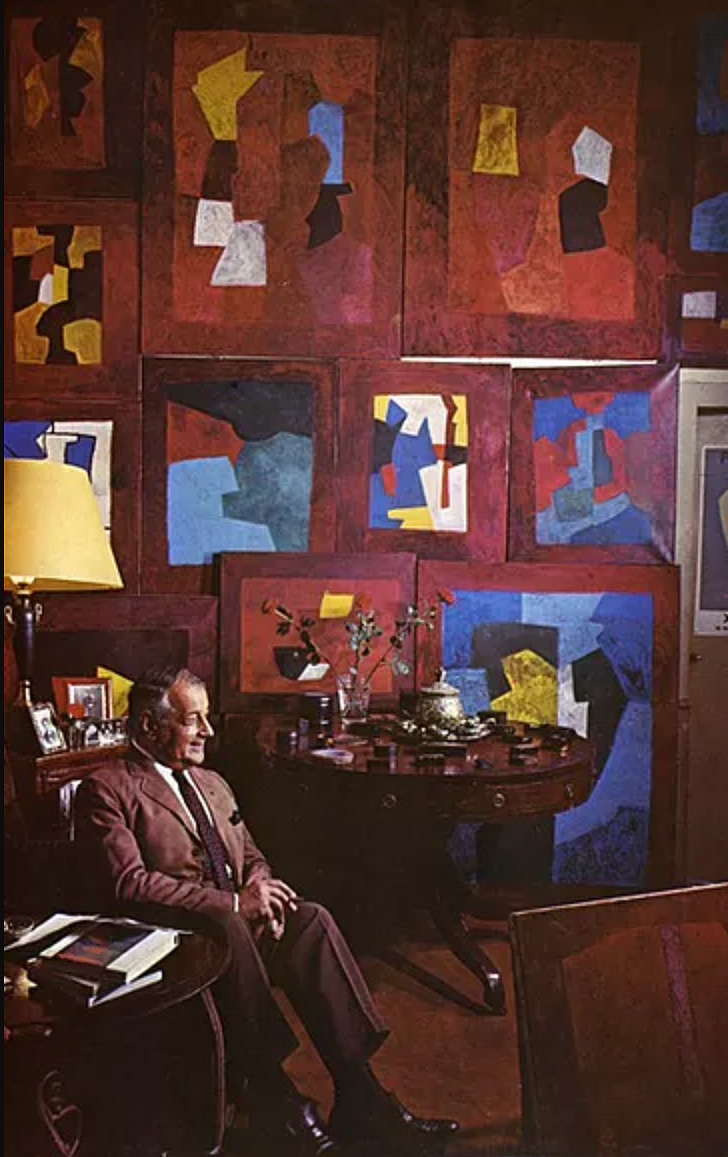
"You are never alone in Paris." Serge Poliakoff
In Paris, he spent his time mainly in the theatrical world, befriending Yul Brynner and Joseph Kessel, who would be his companions for life.
In 1929 he enrolled in art school, and realised that nothing had made him so happy in many years.
I had worked for more than ten years and felt that painting was my vocation, my mission in this world. Serge Poliakoff
His first work, a figurative piece, was exhibited in 1931 and noted by the press.
"I, Serge Poliakoff, arrived in Paris in 1923, having left Moscow in 1918. Already 45 years in Paris, physically I am Russian, spiritually I am a French painter. If I had not come to Paris, perhaps I would not be a painter." - Serge Poliakoff
I believe that if Poliakoff had never met one of the descendants of Sir Thomas More, Marcelle Perreur-Loyd, he would not have become the painter he did.
In 1935, having fallen under the spell of Poliakoff - a handsome Kyrgyz who she met in a Russian cabaret in Paris - my grandmother stole him away to live in London.
London was Poliakoff's first home. The concept 'home' signifies happiness, friends, family, a newly found fulfilment. In London, he was 'at home', feeling the same completion he had experienced as a child in Russia.
Poliakoff studied at the Slade School of Art and at the Grosvenor School of Modern Art, devoting himself to research and contemplating the masterpieces in the British museums. He discovered the canvases of Turner, amongst others, and the first abstract paintings that emerged from the Chelsea Polytechnic (now the Chelsea College of Art). During this time he also unlocked the secret of how to make the colour pigments for which he is renowned. On one of his visits to the British Museum, he took advantage of the guard's absence, and used his penknife to scratch the paint on an Egyptian sarcophagus. He detected then that each successive layer revealed a radiance, an intensity of colours whose transparent effect gave life to the material. The colour or the tonality of the colour do not matter, the only thing that counts is the quality of the colour. Serge Poliakoff
"Those blessed years when living close to you, I was aware of such happiness that at times, I wondered how it was possible to bathe in such bliss.
Those years when I found in your paintings the realization of what I had sought all my life. Witness to this long and patient journey, this daily quest where each canvas following the last unfolded the story of life. The continual search is the soothing answer to all our anxieties. This reflection of the divine that manifested through you in silence, the patient and meditative pursuit of each day.
It seemed to me that we formed a two-headed being; we complemented each other, that's all. So different from one another but with the same perspective, the same conception of life's essential things: the same passion, painting." - Marcelle Poliakoff.
After spending two years in London, where they married in Chelsea on 28 March 1936, Marcelle and Serge Poliakoff decided to return to Paris in 1937.
For Poliakoff, every move and each new experience taught him more about himself. These formative encounters were characteristic of the Russian diaspora of the interwar years.
Wassily Kandinsky brought about a key turning point in Poliakoff's life. His relationship withe the 'Master of Abstraction' encouraged Poliakoff to persevere in his own artistic research, which was more sensual than the mathematical vision of the older painter, who said of him : "For the future, I'm betting on Poliakoff".
As this important friendship grew, Poliakoff also befriended the painter Otto Freundlich, who had a marked influence on him.
Sonia and Robert Delaunay opened the doors of their workshop to him and other young artists, generously offering their teaching. A friendship ensued which would last for the rest of their life.
In 1937, Galerie Zak in Paris organised Poliakoff's first solo exhibition and one could already see the first indications of his future compositions in Danses Russes (a group of early gouaches exhibited there).
During the Second World War, his life became a succession of exciting and dangerous adventures. He was saved in extremis many times, traversing these precarious years that finally triumphed in the Liberation of Paris, and the birth of his son Alexis. In 1945, the Galerie de l'Esquisse exhibited his first abstract canvases and this was followed by a series of exhibitions that continued until the end of his life.
He joined Denise René's stable of artists in 1946 and collaborated with her for many years as she became the great French figurehead of Abstraction.
During this time he met the art critic Charles Estienne who, in 1952, introduced him to his greatest collectors and lifelong friends Ida Chagall and Franz Meyer. Erica Brausen, the founder of the Hanover gallery in London, met Poliakoff in 1957 during an exhibition of gouaches organised by Heinz Berggruen in Paris. The following year, Brausen who had famously discovered Francis Bacon, held the first Poliakoff exhibition in the United Kingdom. A few years later, Bryan Robertson (ith the help of John Russell of New York Times and Brausen) organised the first UK museum retrospective of Poliakoff's work, which took place at the Whitechapel Art Gallery in April 1963.
Pierre Rouve wrote of the exhibition : "His art, flowering in a perpetual present is also the art of limitless presence".
Within a decade, significant museums and galleries across Europe, America and Asia were all exhibiting Poliakoff's work.
During the 1960's, he fully enjoyed this long-deserved recognition. All those who have crossed Poliakoff's path, both past and present, have played an important part in his story : friends, collectors, art dealers, art critics, journlists, curators, art historians, photographers and fans. They have all occupied a determining role in making Poliakoff immortal.
The list is long, but from memory I can recall Dora Vallier, Dina Vierny, Michel Ragon, Gildas Fardel, Myran Eknayan, Atlan, Mortensen, Camille Bryen, Jacobson, Franz Larese and Jürg Janett from the Erker Galerie, the Cavaleros, John Lefèbre in New york, Roland Balay, Emile Gilioli, Jean Messagier, Pierre Dimitrienko, Serge Rezvani, Zoran Music, Piero Dorazio, Pierre Soulages, Mr Bing, Jean Cassou, Ben Nicholson, Gualtieri San Lazzaro, Maria Papa, Marie Raymond, Igor Troubestkoy, Pierre Janlet, Erasme Touraou, Alla and Bénédict Goldschmit, Jean Leymarie, Bernard Antonioz, Jacques Lassaigne, Otto Stangl, Arnold Rudlinger, Pierre Rouve, John Cheim, Joe Fyfe, Brooks Adams, Gérard Durozoi, Dominique Gagneux, Fabrice Hergott…
What would the past be without the future ? It is with great passion that our family protects the memory of our father and grandfather who knew how to share with us his unquenchable thirst for life. He never looked back. Hidden in his dark eyes was a devastating Slavic melancholy but he only ever had a radiant and ravishing smile on his face. He expected a lot from us, and wanted us by his side always. His strong presence, even when he was silent, magnetised us and his kindness still protects us so that we can face the torments of eternity, as our duty and our pleasure lie in proloning his existence.
I know that Poliakoff would be very proud of this exhibition. He would have been very moved to return to London to find himself in the company of his friends Hans Hartung and Antoni Tàpies, as well as to be in the proximity of young artists, which he loved so much.
How strange it is, in life as well as in art, that man looks everywhere, when what he his looking for is right beside him. Serge Poliakoff
Marie Victoire Poliakoff, Granddaughter of the painter, December 2014
« TO TAKE OUT IS TO ADD »
Text for the Serge Poliakoff Exhibition
at Timothy Taylor Gallery
15 Carlos Place London W1K2EX
January 14 - February 21, 2015
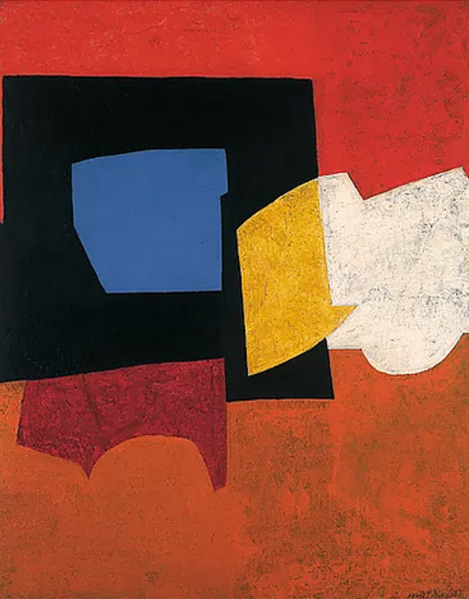
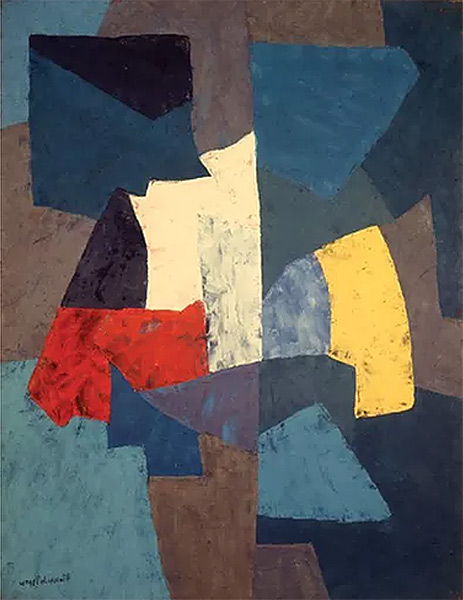
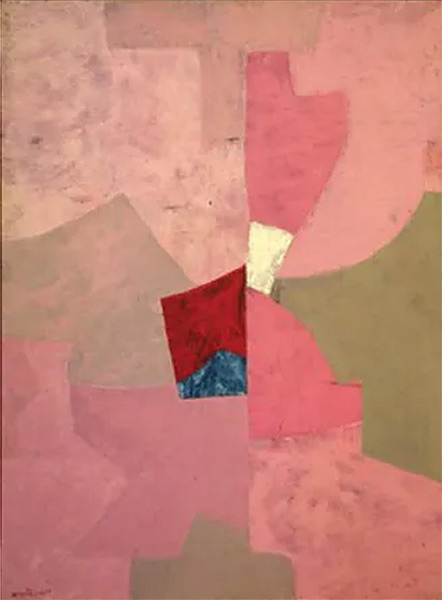
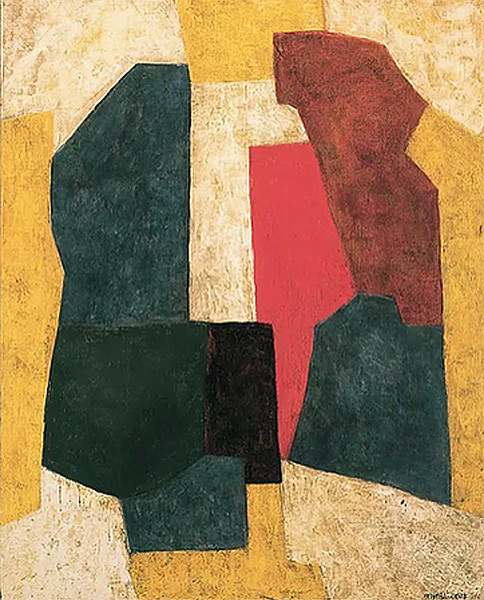
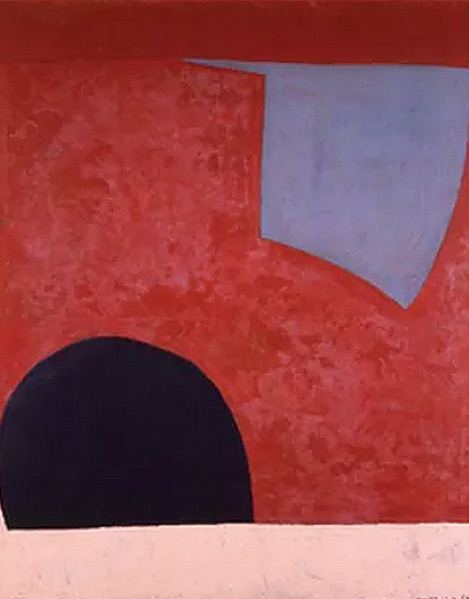
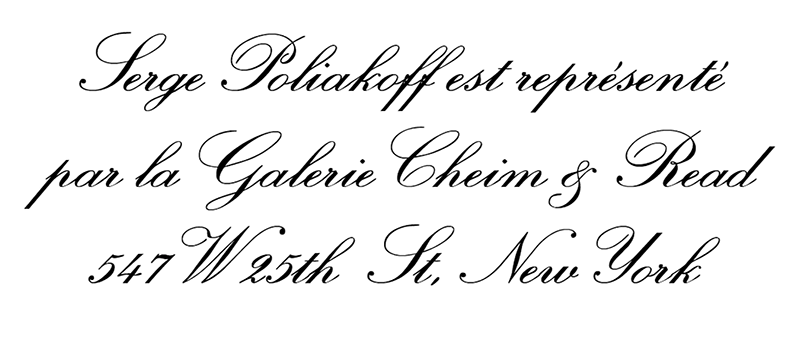
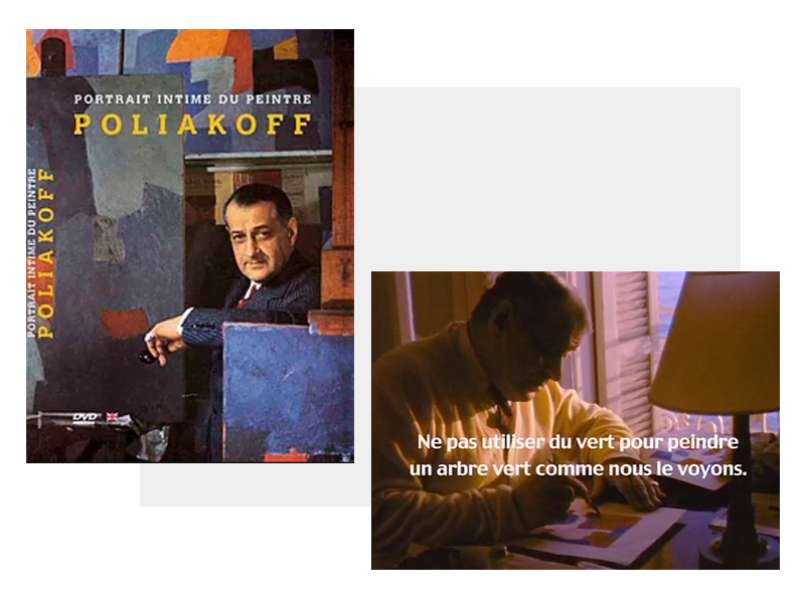
Portrait Intime du peintre Poliakoff
Documentaire d'Elizabeth Lennard
© Artline Films 2004
© ADAGP

Secure payment
3DSecure 2.2

Free DHL Express delivery from €1,200
Carefully prepared parcel
Parcel tracking

Shipment insured
for the value of the artwork, covering theft and damages

Fairest prices
Certificate of authenticity
Two galleries in Paris
Receive an email as soon as a new artwork is added for this artist
Your message has been sent ! We will get back to you as soon as possible.
Please fill in the form if you need further information such
Please fill in your email address, an email will be sent with a link to update your password.
You can now place orders and track your orders.